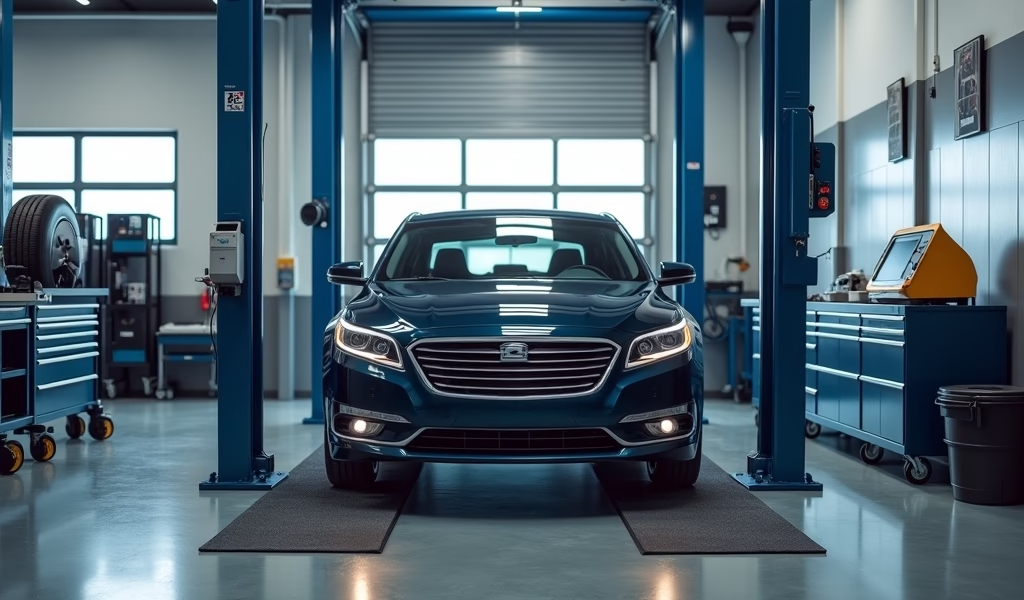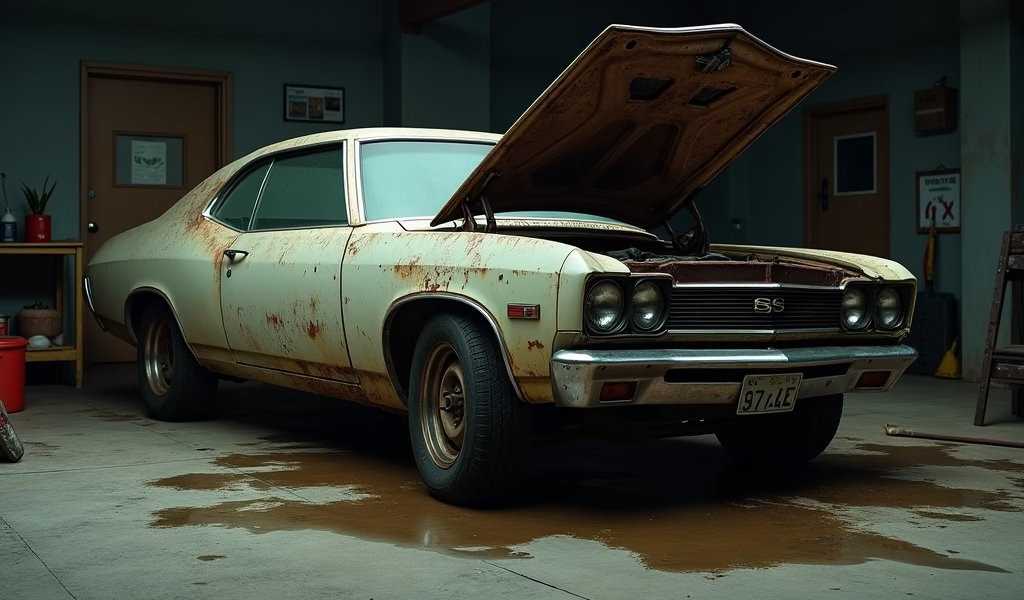Overview
This guide outlines seven essential maintenance practices for used cars: regular oil changes, tire care, battery maintenance, brake system checks, fluid monitoring, air filter replacement, and professional inspections. Following these maintenance tips can significantly extend a used vehicle’s lifespan, improve safety, and provide better value for your investment while avoiding costly repairs.
Table of Contents
- Introduction to Used Car Maintenance
- 1. Regular Oil Changes: The Lifeblood of Your Engine
- 2. Tire Maintenance: Where Rubber Meets the Road
- 3. Battery Care: Keeping the Heart of Your Electrical System Healthy
- 4. Brake System: Safety First
- 5. Fluid Checks: Keeping Everything Running Smoothly
- 6. Air Filters: The Lungs of Your Vehicle
- 7. Regular Professional Inspections: Expert Eyes Matter
- Conclusion
- Frequently Asked Questions
Introduction to Used Car Maintenance
When you buy one of the many used sale cars available on the market, you’re making a smart financial decision. But that wisdom only pays off if you commit to proper maintenance. As a mechanic with over 20 years in the field, I’ve seen how regular care can extend a used car’s life by years—sometimes even decades.
The beauty of maintaining a pre-owned vehicle is that you’re preserving value while avoiding the hefty costs of major repairs or premature replacement. Many folks think maintaining a used car is complicated or expensive, but it doesn’t have to be either. With some basic knowledge and regular attention, almost any used vehicle can provide reliable transportation for years to come.
In this guide, I’ll walk you through the seven most critical maintenance tips for used cars, breaking down complex concepts into straightforward advice that anyone—regardless of mechanical knowledge—can understand and apply. These aren’t just suggestions; they’re the cornerstone practices that keep vehicles running smoothly well beyond 100,000 miles.
1. Regular Oil Changes: The Lifeblood of Your Engine
If there’s one maintenance task you absolutely cannot skip on your car for sale used, it’s the oil change. Think of oil as your engine’s bloodstream—it lubricates moving parts, prevents overheating, and carries away harmful particles. When oil gets old, it becomes less effective at all these crucial jobs.
For most used vehicles, changing your oil every 3,000-7,000 miles is recommended, though this varies based on your specific model, driving conditions, and the type of oil used. Modern synthetic oils can often go longer between changes, but with an older vehicle, err on the conservative side.
Here’s what to keep in mind:
- Consult your owner’s manual for the manufacturer’s recommended interval
- Consider switching to high-mileage oil formulations once your car passes 75,000 miles
- Always check oil levels between changes, especially in older vehicles that might burn or leak oil
- Keep records of your oil changes to maintain your vehicle’s value and track its health
Even if your budget is tight, never skimp on oil changes. At roughly $30-60 every few months for conventional oil (more for synthetic), it’s the most cost-effective insurance against catastrophic engine failure, which can run thousands of dollars. Studies show that regular oil changes can extend engine life by tens of thousands of miles.
2. Tire Maintenance: Where Rubber Meets the Road

Your tires are literally where your car meets the road, making them crucial for safety, fuel efficiency, and comfort. Used cars often come with tires that have varying degrees of wear, so paying special attention to them is essential.
First and foremost, check your tire pressure monthly. Underinflated tires wear unevenly, reduce fuel economy, and can be dangerous in emergency maneuvers. Overinflated tires provide a harsh ride and wear out in the center. The correct pressure is usually listed on a sticker inside the driver’s door jamb or in your owner’s manual—not on the tire itself, which shows maximum pressure.
Tire rotation is your next priority. Every 5,000-8,000 miles, have your tires rotated to ensure even wear. This simple procedure can double your tire life, saving hundreds of dollars over time.
Don’t forget to check tread depth regularly. The classic penny test works well—insert a penny with Lincoln’s head upside down into your tire tread. If you can see all of Lincoln’s head, your tread depth is less than 2/32 of an inch, and it’s time for new tires.
When replacing tires on used vehicles, consider:
- All-season tires for general use in moderate climates
- Winter tires if you regularly drive in snow and ice
- Higher quality tires on older vehicles can actually improve ride and handling dramatically
- Always replace tires in pairs (at minimum) or sets of four (ideal)
Remember that tires typically last 3-5 years regardless of mileage due to rubber aging. Check the manufacture date on your tires (a four-digit code on the sidewall) and replace them if they’re more than 6 years old, even if they look fine.
3. Battery Care: Keeping the Heart of Your Electrical System Healthy
Many used car issues stem from battery problems, but with a little attention, you can avoid being stranded with a vehicle that won’t start. Car batteries typically last 3-5 years, so if you’ve purchased a used vehicle, it’s worth knowing the age of your battery right away.
Visual inspection is your first step. Look for:
- Corrosion around the terminals (a white or blue powdery substance)
- Bulging or cracking on the battery case
- Loose connections
- Low fluid levels (in batteries with removable caps)
Cleaning battery terminals is simple preventative maintenance anyone can do. Mix a tablespoon of baking soda with a cup of water, disconnect the cables (always negative/black first), and use an old toothbrush to scrub away corrosion. Rinse with plain water and dry thoroughly before reconnecting (positive/red first, then negative/black).
For longer trips in your used car purchased through an app, consider keeping a portable jump starter in your trunk. These compact devices have become affordable and reliable, eliminating the need to flag down help if your battery fails.
In colder climates, batteries work harder and die faster. If you live where winters are severe, consider replacing your battery proactively every 3-4 years rather than waiting for it to fail—often on the coldest morning of the year!
Many auto parts stores will test your battery for free, which is worth doing annually once your used car’s battery reaches the three-year mark. This simple check can prevent a world of inconvenience.
4. Brake System: Safety First
Your brake system is not an area to economize or postpone maintenance. With used vehicles, brake components may have significant wear even if they’re still functioning. Knowing the warning signs of brake issues can literally be a lifesaver.
Listen for squealing or grinding noises when braking. Squealing often indicates that brake pads have worn to the point where their wear indicators are contacting the rotors. This is your early warning—you still have brake material, but it’s time to schedule service soon. Grinding, however, means metal-on-metal contact and requires immediate attention.
Feel for vibrations or pulsing through the brake pedal, which typically indicates warped rotors. This condition affects stopping distance and can worsen rapidly.
Check for these other brake warning signs:
- Pulling to one side when braking
- Brake pedal feels “soft” or sinks to the floor
- Brake fluid appears dark brown or black (it should be clear or light amber)
- Brake warning light illuminated on dashboard
A basic brake inspection should occur every 6 months or 5,000-7,000 miles. Most tire shops will do this for free when rotating your tires. For used vehicles, it’s wise to establish a baseline by having a thorough brake inspection shortly after purchase.
Brake fluid should be changed every 2-3 years because it absorbs moisture over time, which lowers its boiling point and compromises braking performance. This is an often overlooked maintenance item, but safety experts recommend it for all vehicles, especially those with higher mileage.
5. Fluid Checks: Keeping Everything Running Smoothly

Beyond oil, your used car relies on several other vital fluids that need regular checking and replacement. Think of these fluids as the different vitamins your vehicle needs—each serves a specific purpose in keeping systems healthy.
Transmission fluid is particularly critical in used vehicles. Automatic transmissions are complex and expensive to repair, making preventative maintenance essential. Check your transmission fluid with the engine running and the transmission in park (consult your manual for the exact procedure). The fluid should be red or pink, not brown or black, and should not smell burnt.
Coolant (antifreeze) prevents both freezing in winter and overheating in summer while providing corrosion protection for your engine. In older vehicles, coolant should be changed every 2 years or 30,000 miles. Modern vehicles with extended-life coolant may go 100,000 miles between changes, but regular level checks are still important.
Power steering fluid helps you turn the wheel smoothly and prevents wear on steering components. Low fluid can cause groaning noises during turning and eventually lead to pump failure.
Here’s a simple fluid maintenance schedule for used cars:
- Monthly: Check all fluid levels (oil, coolant, brake, power steering, transmission, windshield washer)
- Every 30,000 miles: Change transmission fluid (more frequently for vehicles used for towing)
- Every 2-3 years: Flush and replace coolant
- Every 2-3 years: Change brake fluid
- As needed: Top off power steering and windshield washer fluid
Keep a small notebook in your glove compartment to track fluid additions. If you’re regularly adding the same fluid, you likely have a leak that needs addressing before it becomes serious.
6. Air Filters: The Lungs of Your Vehicle
Air filters are among the easiest and most affordable maintenance items to handle yourself, yet they play a crucial role in your car’s performance and longevity. Your used vehicle has two important air filters: the engine air filter and the cabin air filter.
The engine air filter prevents dust, dirt, and debris from entering your engine while allowing the proper amount of air in for combustion. A clogged air filter can reduce fuel economy by up to 10% and decrease acceleration. For used vehicles, especially those driven in dusty conditions, check the air filter every 5,000 miles and replace it every 15,000-30,000 miles.
Checking most engine air filters takes less than a minute—they’re typically housed in a black plastic box near the top of the engine, secured by clips or simple screws. Hold the filter up to a light source; if you can’t see light passing through it, it’s time for replacement.
The cabin air filter, which many owners forget about, cleans the air entering your vehicle’s heating and cooling system. This filter removes pollen, dust, and other airborne particles. If you notice musty odors from your vents or reduced airflow, your cabin filter is likely overdue for replacement.
Both filters cost between $10-30 each and take minutes to replace. The cabin filter is usually located behind the glove compartment or under the dashboard. Your owner’s manual will show the exact location and replacement procedure.
For allergy sufferers, upgrading to a high-quality cabin filter can significantly improve your driving comfort. Some aftermarket filters even include activated charcoal to remove odors—a worthwhile upgrade for many used vehicles that might have lingering scents from previous owners.
7. Regular Professional Inspections: Expert Eyes Matter
While many maintenance tasks can be handled yourself, having professional eyes examine your used car periodically is invaluable. A good mechanic can spot developing problems before they become expensive repairs.
I recommend a comprehensive inspection annually or every 10,000 miles for most used vehicles. This inspection should include:
- Suspension components (shocks, struts, bushings)
- Steering system
- Exhaust system integrity
- Belt and hose condition
- Battery health and charging system
- Lighting and electrical systems
- Undercarriage inspection for leaks or damage
Finding a trustworthy mechanic is essential. Ask friends for recommendations or check online reviews. Independent shops specializing in your vehicle’s make often provide better value than dealerships for older cars. Once you find a good mechanic, stick with them—they’ll learn your car’s quirks and help you prioritize repairs and maintenance.
Consider scheduling these inspections just before winter or summer, when temperature extremes put additional stress on vehicles. If you’re planning a long road trip in your used car, a pre-trip inspection provides peace of mind worth far more than its modest cost.
Don’t be afraid to ask questions during these inspections. Most mechanics are happy to show you what they’re finding and explain why certain repairs might be needed. This education process helps you become a more informed car owner.
Conclusion
Maintaining a used car doesn’t have to be intimidating or expensive. By following these seven essential maintenance tips—regular oil changes, tire care, battery maintenance, brake system checks, fluid monitoring, air filter replacement, and professional inspections—you’ll extend your vehicle’s life and get the most value from your investment.
Remember that consistency matters more than perfection. Even if you can’t follow every recommendation exactly, doing something is always better than doing nothing. Start with the basics like oil changes and tire pressure, then gradually incorporate other maintenance tasks as you become more comfortable.
Your used car has plenty of life left in it if you treat it right. Each oil change, tire rotation, and fluid check is an investment that pays dividends in reliability, safety, and long-term savings. And there’s a certain satisfaction that comes from taking good care of your vehicle—a satisfaction that only grows as the miles add up and your car continues to serve you faithfully.
So grab that owner’s manual, schedule that oil change you’ve been putting off, and commit to being a proactive car owner. Your vehicle—and your wallet—will thank you.
Frequently Asked Questions
How often should I change the oil in my used car?
For most used vehicles, change your oil every 3,000-7,000 miles depending on your driving conditions and the type of oil used. Check your owner’s manual for the manufacturer’s specific recommendation for your model.
What’s the most important maintenance item for used cars?
Regular oil changes are the single most important maintenance item, as they directly impact engine longevity. Clean oil properly lubricates your engine and prevents premature wear of critical components.
How can I tell if my used car needs new tires?
Use the penny test by inserting a penny upside-down into your tire tread—if you can see all of Lincoln’s head, it’s time for new tires. Also check for uneven wear, bulges, cracks, or tires manufactured more than 6 years ago.
What fluids should I check regularly in my used car?
Check engine oil, coolant/antifreeze, brake fluid, power steering fluid, transmission fluid, and windshield washer fluid monthly. Low fluid levels can indicate leaks or consumption issues that should be addressed promptly.
Is it worth fixing up an older used car?
Yes, in most cases, maintaining an older used car is far more economical than buying a new vehicle. Even spending $1,000-2,000 annually on maintenance is typically cheaper than new car payments, higher insurance costs, and depreciation.

